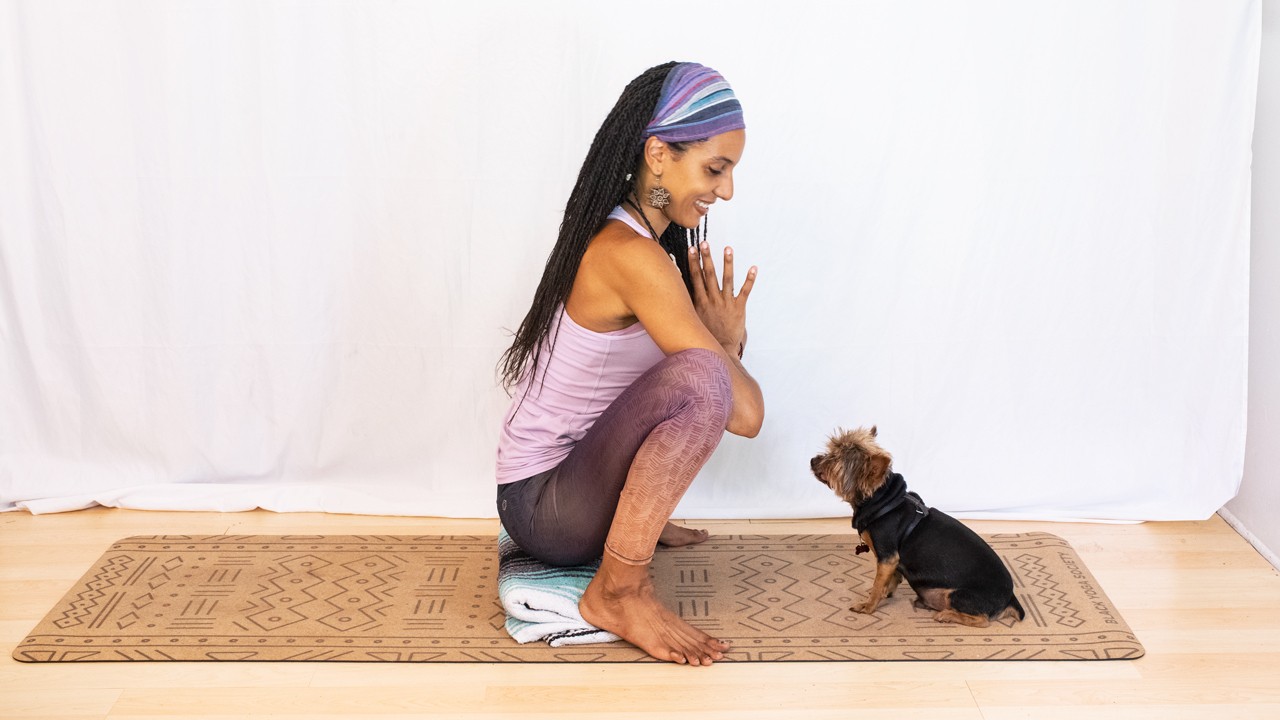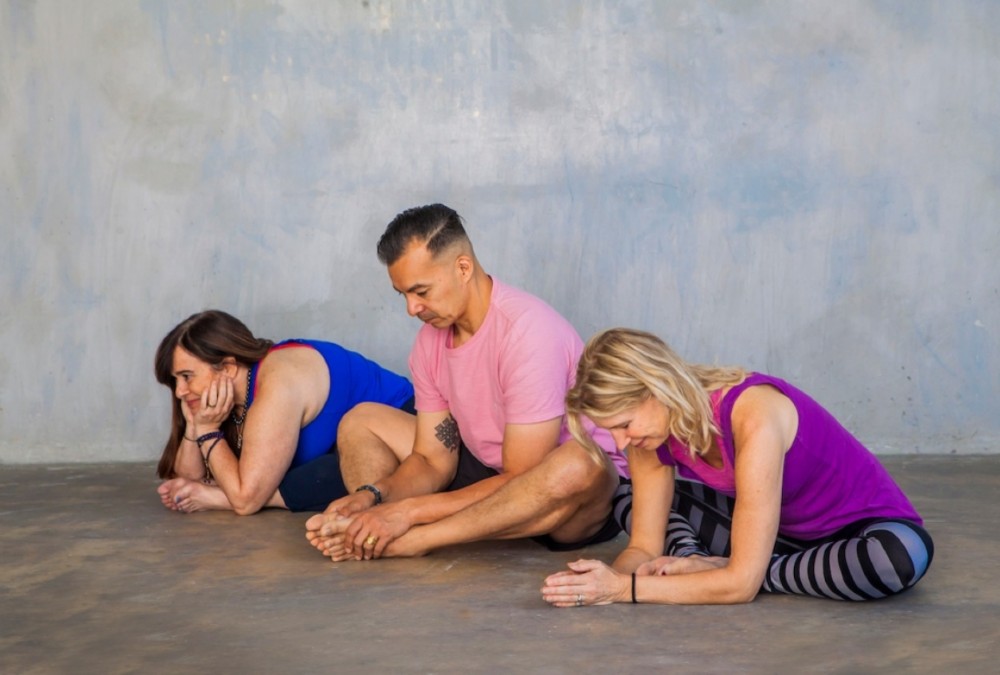Malasana, also know as Garland pose or Yogic Squat, is a yoga asana that I see often in magazines and social media. It seems to fit the “image of a yogi” quite well; the yogi/yogini always seems grounded, comfortable, and peaceful.
The truth is, Malasana is a pose that is accessible to some yogis and yoginis and extremely uncomfortable for others. But with some adjustments and willingness to explore non-traditional approaches to this pose, Malasana can be quite beneficial to many practitioners.
Mala = Necklace/Garland Asana = posture
The most common translation of Malasana is Garland pose (some also refer to it as squat pose). Its symbolism is tightly related to the importance of accepting the cyclical nature of life.
A “mala” is a string of 108 beads used for chanting mantras and meditation. The number 108 having several symbolic meanings.
The mala represents the cycle of life and the Universe; the cycle of creation, sustenance, and transformation, a constant process of renewal. It represents the Earth’s support intertwined with our inner nourishment.
Anatomical benefits of Malasana
When it comes to physical and anatomical benefits, Malasana is a great posture to introduce into your practice since it supports many parts of our body and creates space. It strengthens the feet, ankles, and legs. It also creates space in the lumbar spine and the spinal column. The pose also opens and strengthens the hips and groin.
Other benefits of Garland pose
Malasana is a very grounding posture. When we allow the feet to be in contact with the Earth, we become more present and in contact with our true nature.
Garland pose helps release energy, especially stress, that may be stuck in the hips, lower back, and legs.
When looking for a way to release energy, also consider the importance of the process of elimination that the body must go through. I live with Crohn’s disease and find myself in Malasana when I am looking for relief as Malasana aids in digestion. The pose almost feels like a massage for my intestines!
Another process of elimination that Malasana supports is menstruation. It is a great pose to do when you find yourself curled up in a ball, in pain and uncomfortable. It opens up the hips and the downward energy allows for some of the intensity and discomfort to release.
Contraindications for Garland pose
Like with any other yoga posture, pay attention to how you feel before practicing Malasana. If you have any lower back, hip, knee, foot, or ankle injuries, either refrain from practicing this pose or consult with a yoga teacher and medical provider. If cleared, explore some of the suggestions below.
Find the variation that works best for your body
I believe this yoga posture can fit most bodies if we are willing to explore various approaches and let go of the feeling that the pose needs to look a certain way for it to be “right”.
let go of the feeling that the pose needs to look a certain way for it to be “right”
Here are a few ways in which you can access this posture depending on how your body feels and what you need that day. Give yourself permission to observe and adjust, to change your mind if a certain variation does not feel right, and to notice that some days the body wants a thing, and next day it does not.
Give yourself space to know this and embrace it.
Basics of Malasana pose
When looking at Malasana in its most common form, we can access it from a wide-legged Tadasana (mountain pose). Turn your toes out, and slowly lower your hips down toward the Earth. As you do so, breathe, notice how it feels, and make decisions from a place of love and support toward yourself.
As you find your hips lowering down toward the earth, keep your spine long. Allow your elbows to gently press on to the inner thighs or knees, and connect the palms of your hands together in Anjali mudra – prayer position. As you do so, lift your chest up toward your thumbs.
Now breathe. Notice what comes up. Breathe a little more.
Malasana variation on your back
If you are currently dealing with knee problems or your hips feel particularly tight, you can access this posture lying down on your back.
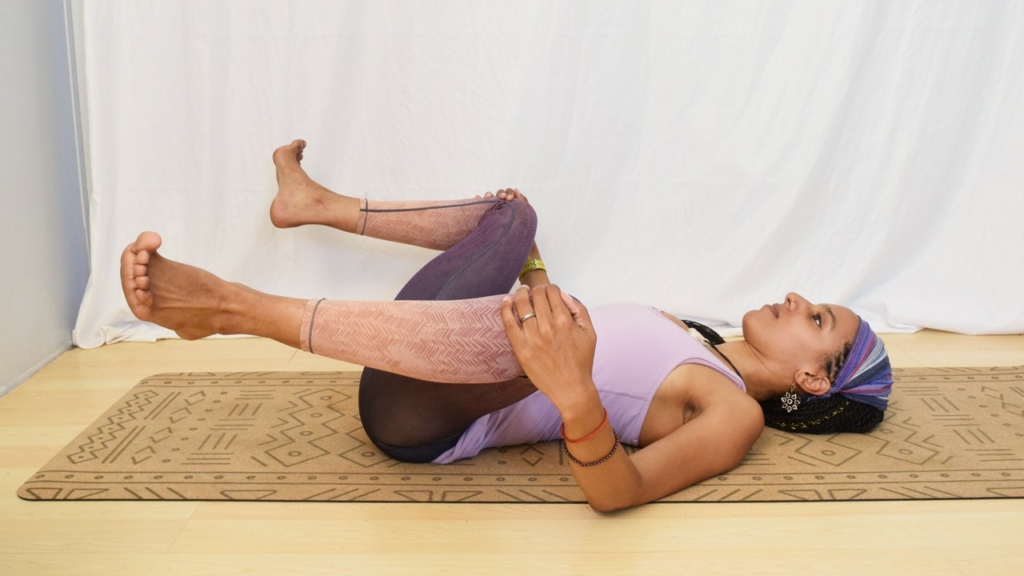
Lay on your back, bring your knees to your chest, and take your knees wide toward your armpits or shoulders. Feel free to bring blocks onto the outsides of each knee to give yourself support and find space to relax a bit in the posture. Allow your hands to come together in front of your heart (Anjali Mudra) and gently connect your elbows to your inner thighs. Lift your chest up gently.
Try a variation against a wall
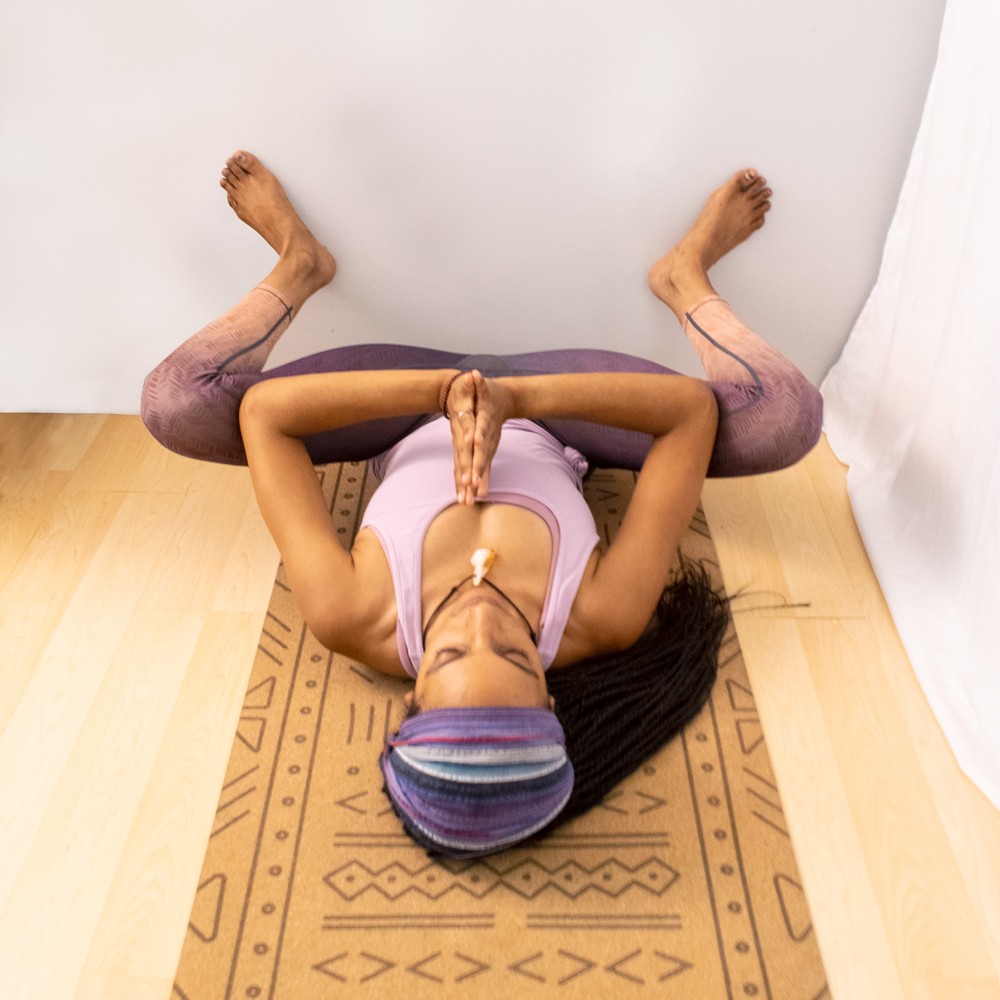
Get close to a wall, and bring your sitting bones close to it. Take your knees into your chest and then wide toward your underarms or shoulders. Press the soles of your feet onto the wall. Elongate your spine. Make sure your back is as connected to the ground as possible. Bring your hands to your heart and gently open the knees with your elbows as you lift your chest up toward your thumbs.
Use blocks and blankets as props
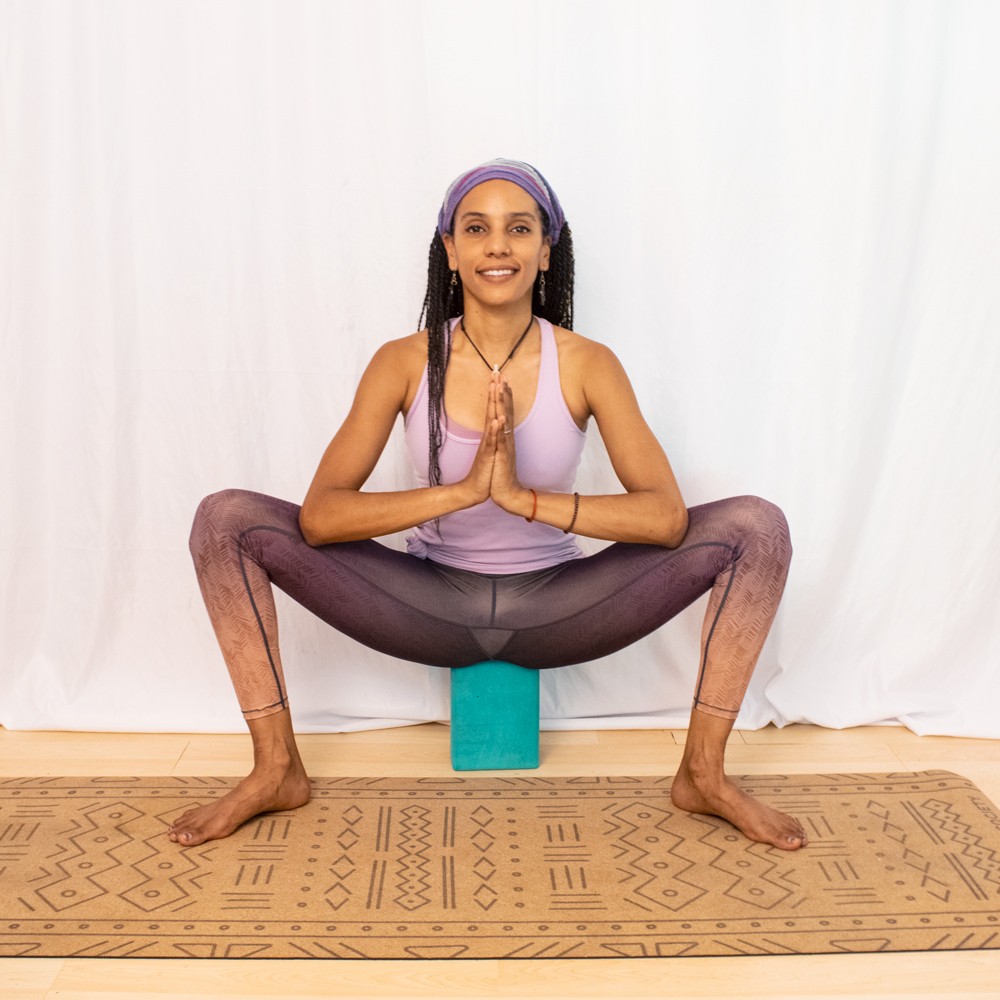
Try Malasana against the wall so that you can get a good amount of support in this posture. this way you can really explore the benefits of it and not have to focus on the discomfort. You can approach it from a wide legged Tadasana against the wall and slide your spine down the wall until you find yourself in the asana. Continue to press your back against the wall as you lift your chest up and soften your hips down. For extra support, slide a block under your sitting bones and allow yourself to sit on it.
Once the posture feels more accessible, use the block under the sit bones, and this time step away from the wall. Allow your spine to support you while still allowing softness through your hips thanks to the block beneath you.
If you have difficulty bringing your heels to the ground, there are several things you can explore. First, see if turning your toes out a bit more changes anything. Explore taking the feet wider or narrower. If your heels are still off the floor, fold a blanket under your heels until you can rest them on it and feel grounded.
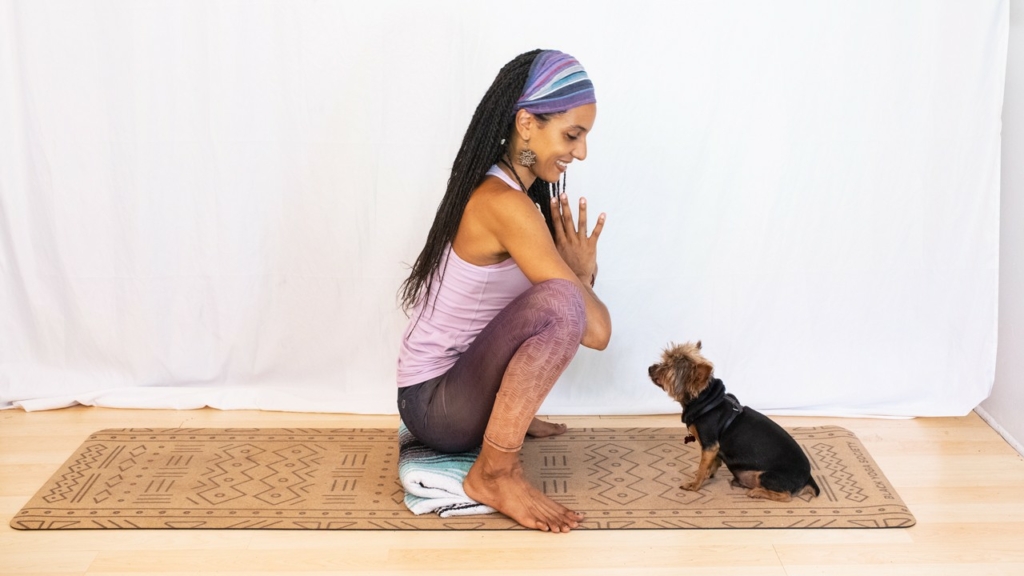
Use it as a tool of observation
Malasana has always been a challenging asana for me, mostly because I thought there was only one way to do it, one way for it to be ‘right’. Once I learned that I could allow myself to approach it differently every day, I learned that I can use it as a tool of observation.
I practice it daily just for fun, to see where my tension is located that day. It gives me a chance to pause and truly explore where my mind is. This posture brings up emotions and discomfort. So, when I practice it I am able to pause. I breathe into the discomfort. Instead of reacting and fleeing, I can choose to stay and let my nervous system know that when life is almost unbearable, I have the capacity to breathe. I allow the fear, stress, and tightness to release down into the earth and transmute into grounding, presence, and peace.
More ways to adapt poses to suit your body
EkhartYoga members can follow the Functional Yoga Program with Esther, Anat and Marcel. This 3 week program is all about learning how to make yoga poses work for our individual bodies. We focus on what we are really trying to achieve with various yoga poses and why, and how we can adapt them so that they serve us best.
Not a member yet? Sign up for your two-week free trial to join the community.

